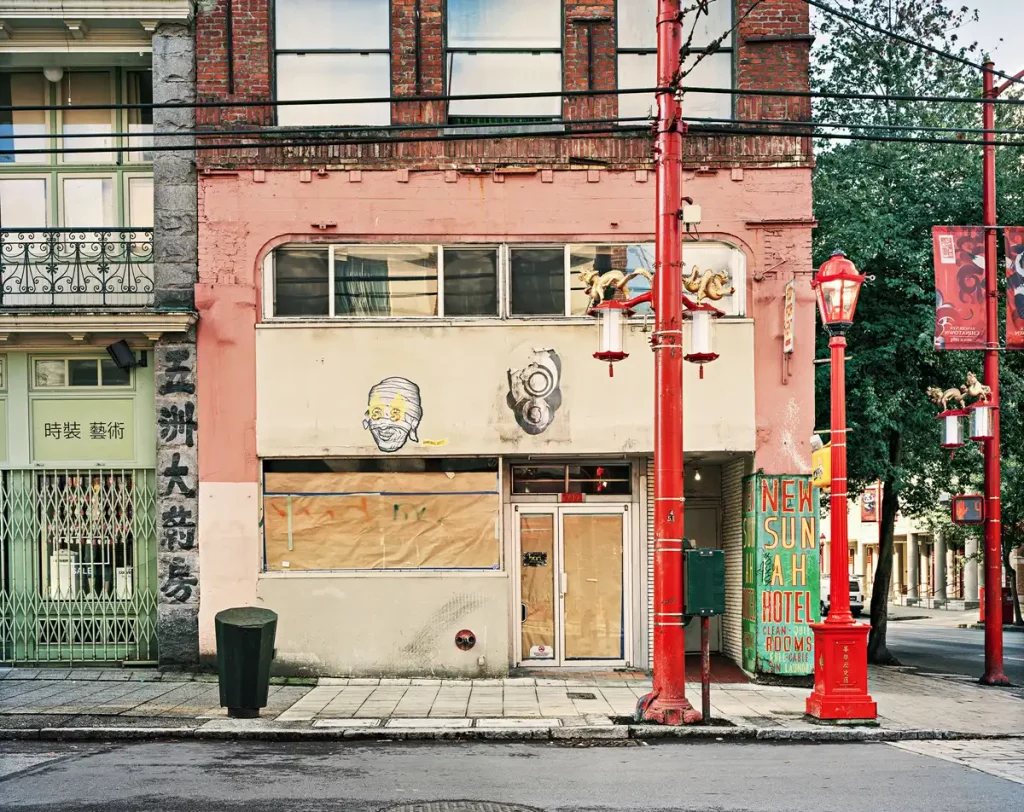
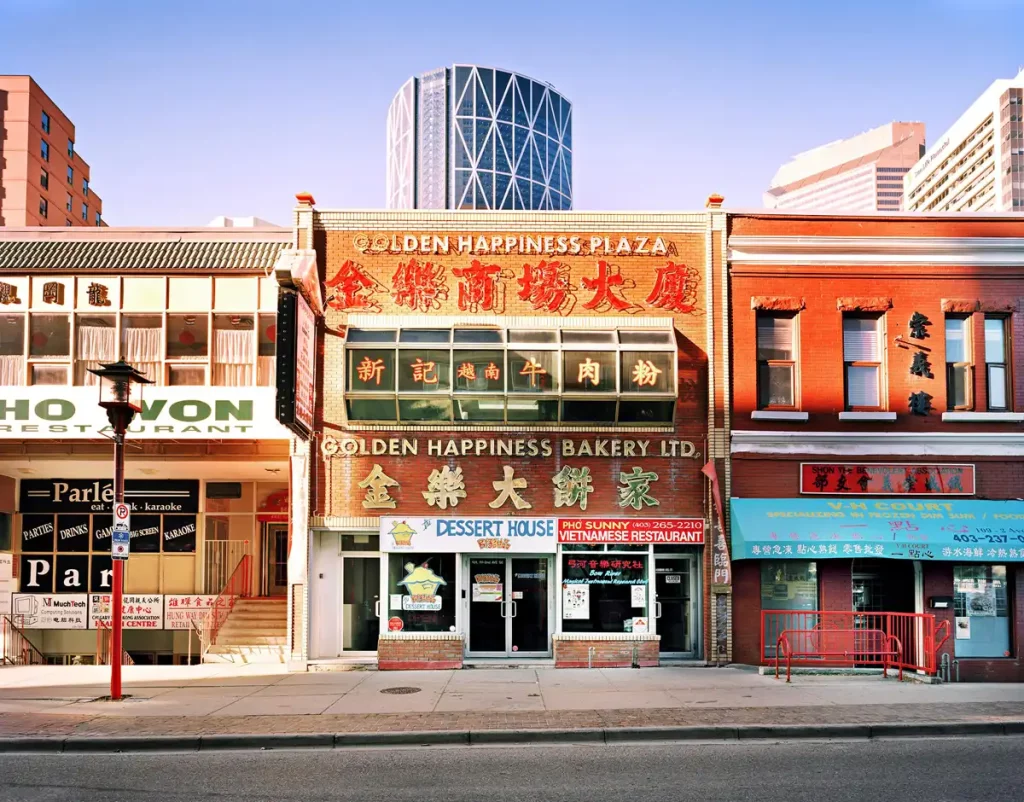
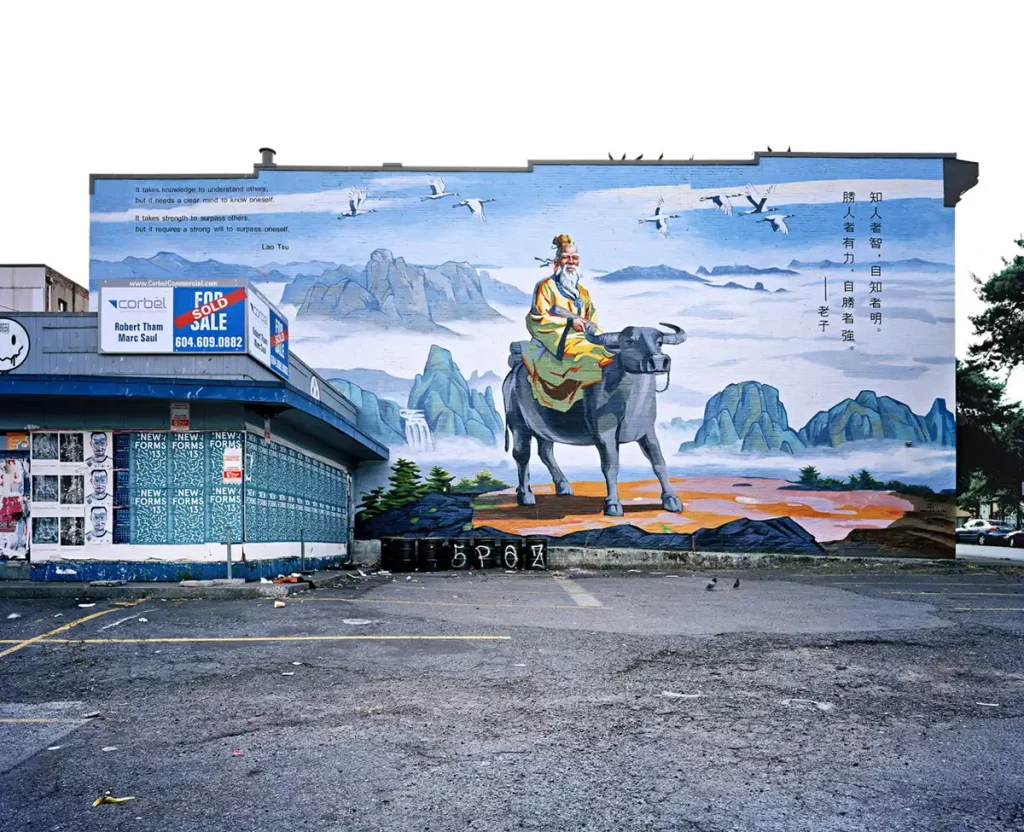
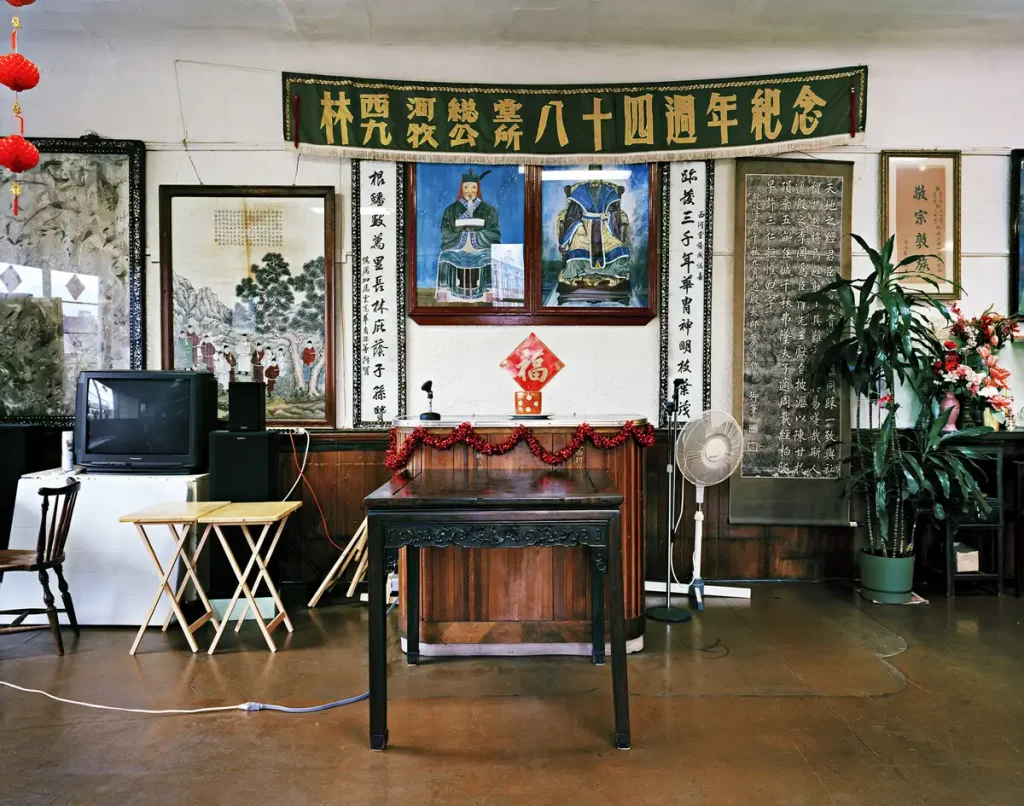
Lim Sai Hor Kow Mock Benevolent Association, Vancouver, 2014.
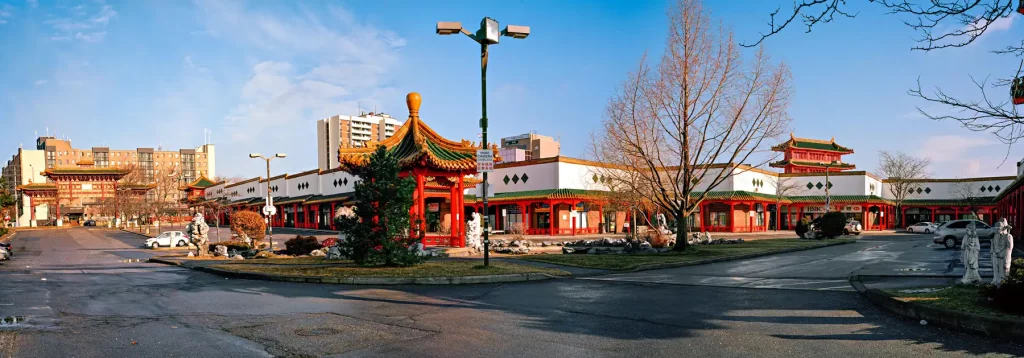
Everywhere that Chinese diasporic communities have taken root, chances are that one will come upon a Chinatown. While Chinatowns predate the advent of photography—the first Chinatowns were established in the sixteenth, seventeenth, and eighteenth centuries in southeast Asia, at Binondo in Manila, Hoi An in Vietnam, and Glodok in Indonesia, respectively—these ethnic enclaves have featured prominently in photography from the nineteenth century onward in works made by amateurs and professional artists alike. Notably Singapore-based photographer Zhuang Wubin follows the paths of Chinese migrants in Southeast Asia in several notable projects.1 Indeed cultural critic Ien Ang observes that Chinatowns are a global phenomenon with multiple meanings. As such local contexts need to be examined carefully when considering the visual tropes of these spaces. Ang adds that, in the contemporary moment, understanding the significance of Chinatowns around the world also needs to take account of discourses of threat and opportunity that have become entrenched in response to the ascendance of China as a world power. Chinatowns’ meanings are as varied as the diasporic Chinese communities who inhabit, traverse, and remember these spaces.
In Canada and the United States, Chinatowns were ethnic enclaves that emerged in the nineteenth century out of necessity. Not only did exclusion laws limit the numbers of Chinese who were permitted to come to Canada and the US, but discriminatory practices also restricted where diasporic Chinese could live and where they could work. Many early Chinese immigrants were pushed to the margins of cities by white settler society as a form of segregation. Yet they became cultural hubs for these immigrants and for the generations after them. Businesses, restaurants, and community organizations that clustered in these Chinatowns provided opportunities for the diaspora to share resources, make a living, preserve heritage, and establish a sense of belonging. Chinatowns were a means of providing support and survival. But just like the unceded Indigenous lands these diasporic Chinese communities occupy on Turtle Island, Chinatowns continued to be displaced; many Chinatowns faced threats of demolition and are now affected by gentrification.
In this conversation critic Brandon Leung discusses with photographer Morris Lum the political and historical resonances of Chinatown for diasporic Chinese in North America, focusing on the significance of a vernacular form of representation.
https://read.dukeupress.edu/trans-asia-photography/article/doi/10.1215/21582025-10048252/328352/Tong-Yan-Gaai-A-North-American-Chinatown
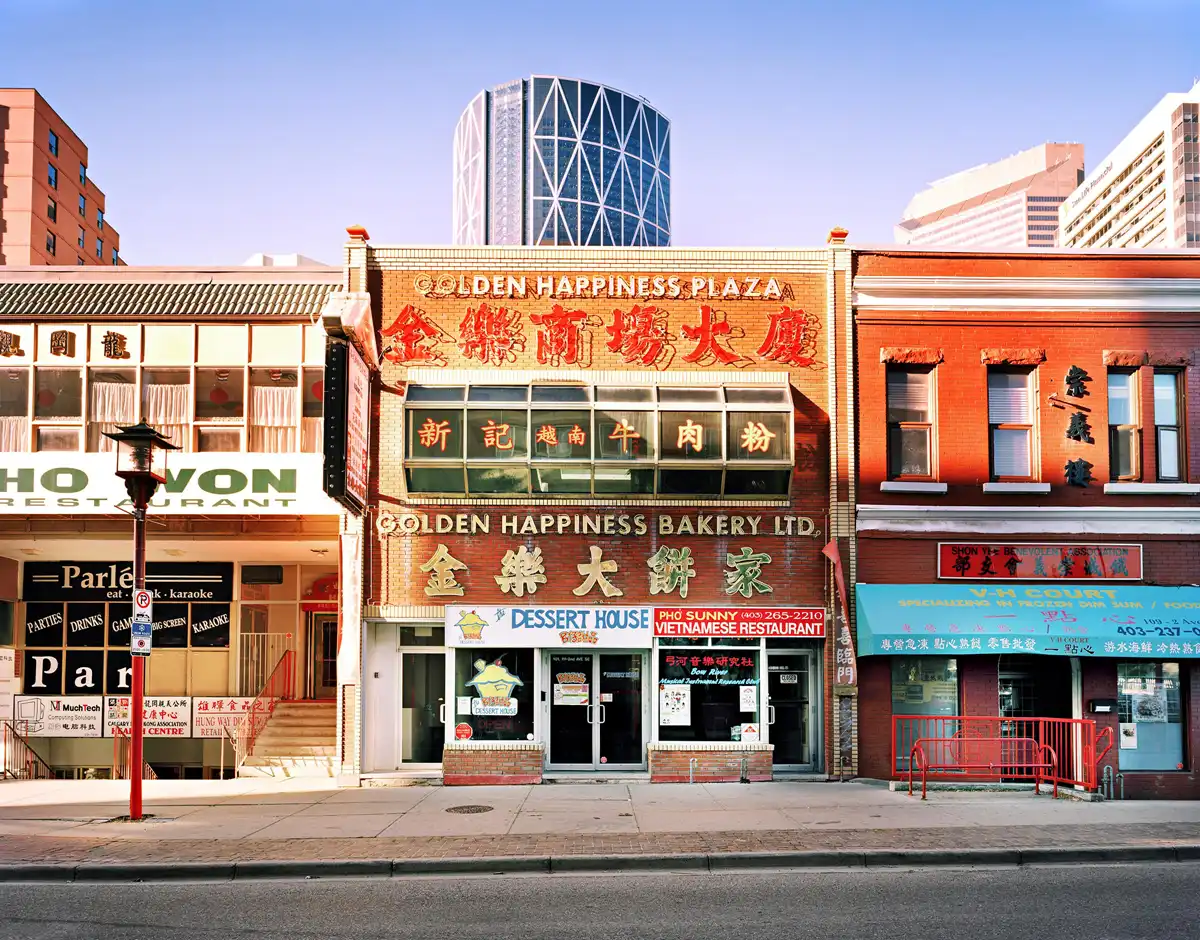
发表回复